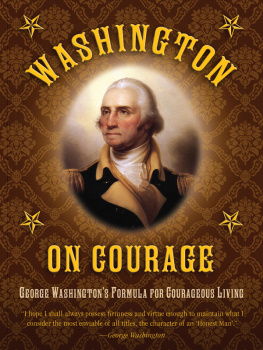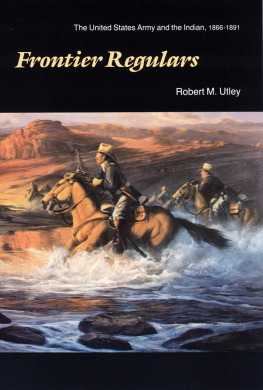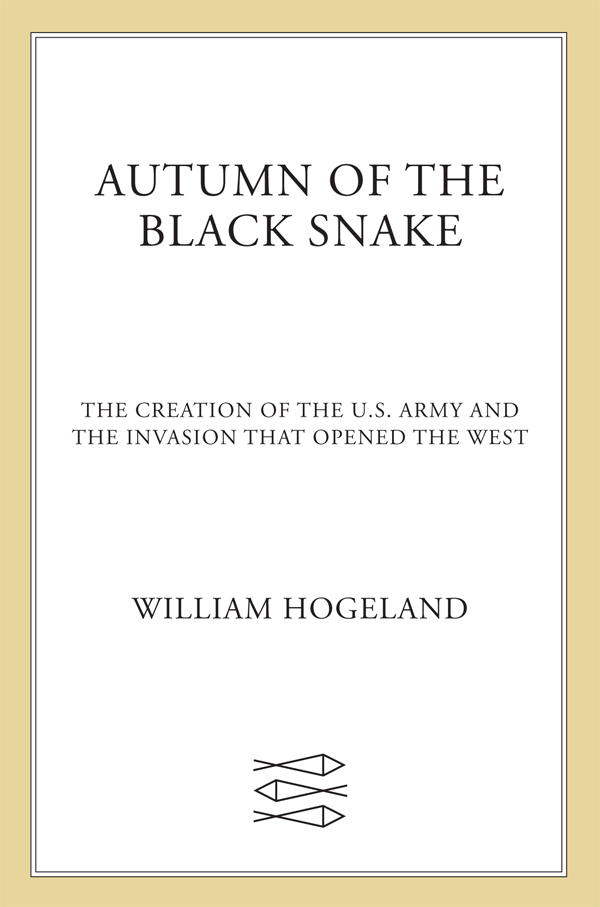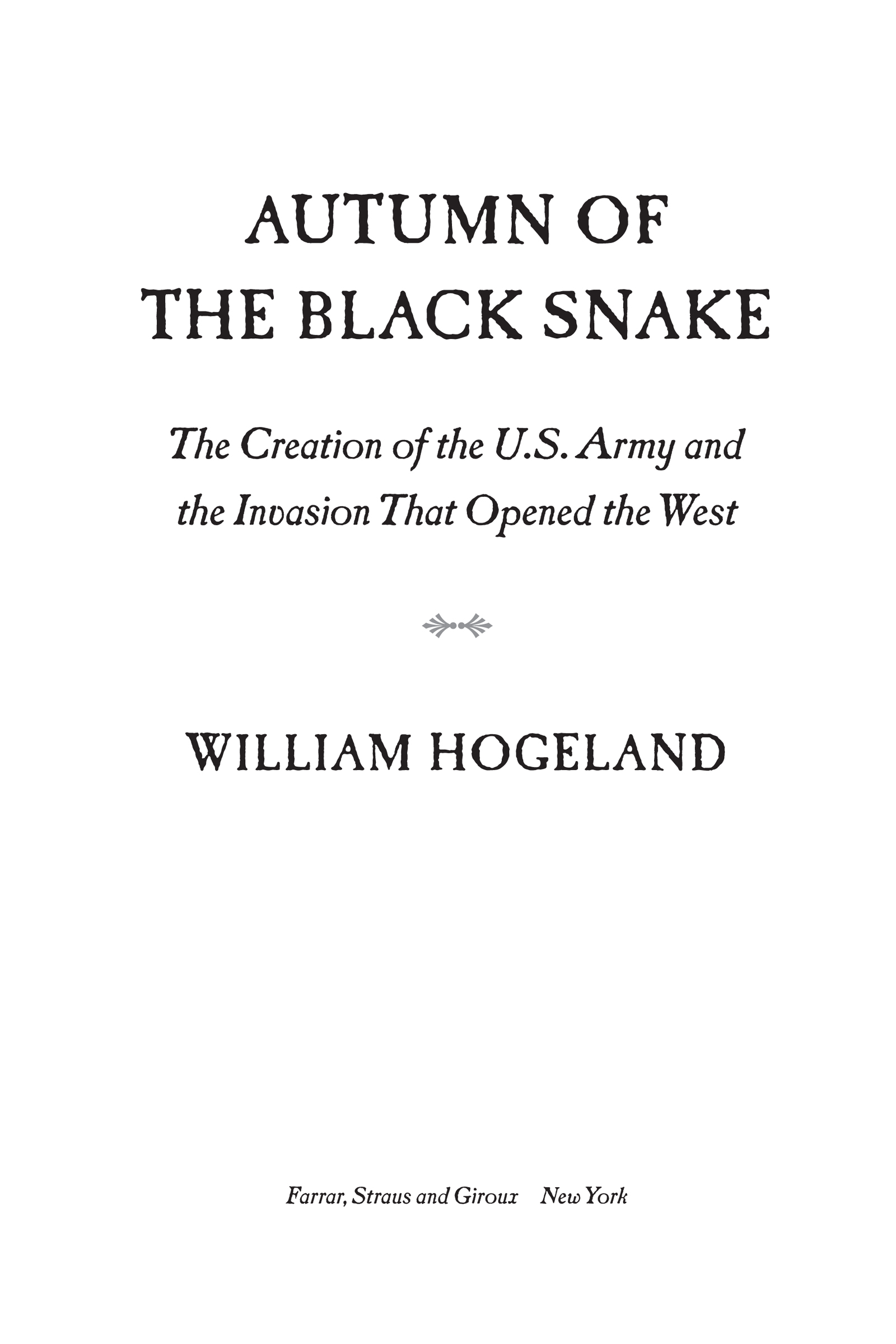William Hogeland - Autumn of the Black Snake: The Creation of the U.S. Army and the Invasion That Opened the West
Here you can read online William Hogeland - Autumn of the Black Snake: The Creation of the U.S. Army and the Invasion That Opened the West full text of the book (entire story) in english for free. Download pdf and epub, get meaning, cover and reviews about this ebook. year: 2017, publisher: Farrar, Straus and Giroux, genre: History. Description of the work, (preface) as well as reviews are available. Best literature library LitArk.com created for fans of good reading and offers a wide selection of genres:
Romance novel
Science fiction
Adventure
Detective
Science
History
Home and family
Prose
Art
Politics
Computer
Non-fiction
Religion
Business
Children
Humor
Choose a favorite category and find really read worthwhile books. Enjoy immersion in the world of imagination, feel the emotions of the characters or learn something new for yourself, make an fascinating discovery.

- Book:Autumn of the Black Snake: The Creation of the U.S. Army and the Invasion That Opened the West
- Author:
- Publisher:Farrar, Straus and Giroux
- Genre:
- Year:2017
- Rating:5 / 5
- Favourites:Add to favourites
- Your mark:
Autumn of the Black Snake: The Creation of the U.S. Army and the Invasion That Opened the West: summary, description and annotation
We offer to read an annotation, description, summary or preface (depends on what the author of the book "Autumn of the Black Snake: The Creation of the U.S. Army and the Invasion That Opened the West" wrote himself). If you haven't found the necessary information about the book — write in the comments, we will try to find it.
The forgotten story of how the U.S. Army was created to fight a crucial Indian war
When the Revolutionary War ended in 1783, the newly independent United States savored its victory and hoped for a great future. And yet the republic soon found itself losing an escalating military conflict on its borderlands. In 1791, years of skirmishes, raids, and quagmire climaxed in the grisly defeat of American militiamen by a brilliantly organized confederation of Shawnee, Miami, and Delaware Indians. With nearly one thousand U.S. casualties, this was the worst defeat the nation would ever suffer at native hands. Americans were shocked, perhaps none more so than their commander in chief, George Washington, who saw in the debacle an urgent lesson: the United States needed an army.
Autumn of the Black Snake tells the overlooked story of how Washington achieved his aim. In evocative and absorbing prose, William Hogeland conjures up the woodland battles and the hardball politics that formed the Legion of the United States, our first true standing army. His memorable portraits of leaders on both sidesfrom the daring war chiefs Blue Jacket and Little Turtle to the doomed commander Richard Butler and a steely, even ruthless Washingtondrive a tale of horrific violence, brilliant strategizing, stupendous blunders, and valorous deeds. This sweeping account, at once exciting and dark, builds to a crescendo as Washington and Alexander Hamilton, at enormous risk, outmaneuver Thomas Jefferson, James Madison, and other skeptics of standing armiesand Washington appoints the seemingly disreputable Anthony Wayne, known as Mad Anthony, to lead the legion. Wayne marches into the forests of the Old Northwest, where the very Indians he is charged with defeating will bestow on him, with grudging admiration, a new name: the Black Snake.
Autumn of the Black Snake is a dramatic work of military and political history, told in a colorful, sometimes startling blow-by-blow narrative. It is also an original interpretation of how greed, honor, political beliefs, and vivid personalities converged on the killing fields of the Ohio valley, where the United States Army would win its first victory, and in so doing destroy the coalition of Indians who came closer than any, before or since, to halting the nations westward expansion.
William Hogeland: author's other books
Who wrote Autumn of the Black Snake: The Creation of the U.S. Army and the Invasion That Opened the West? Find out the surname, the name of the author of the book and a list of all author's works by series.










